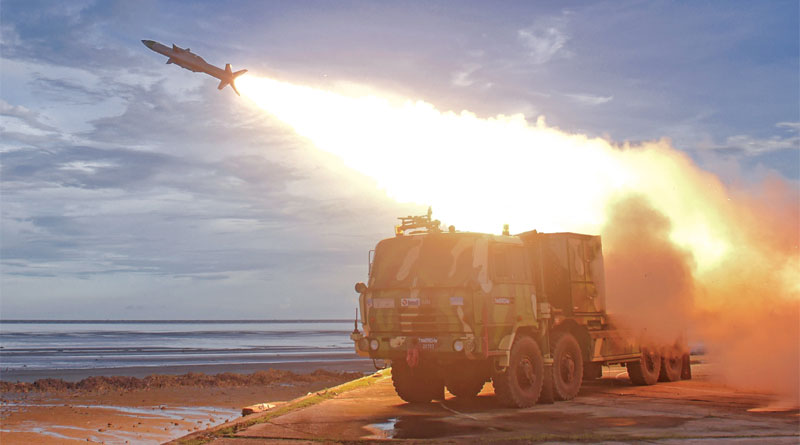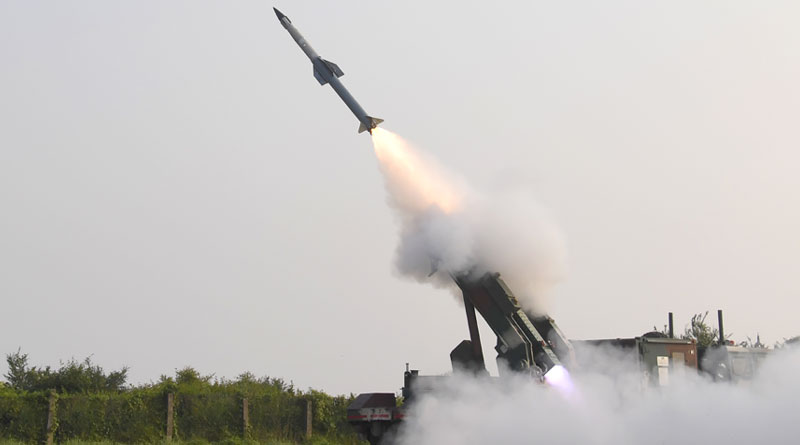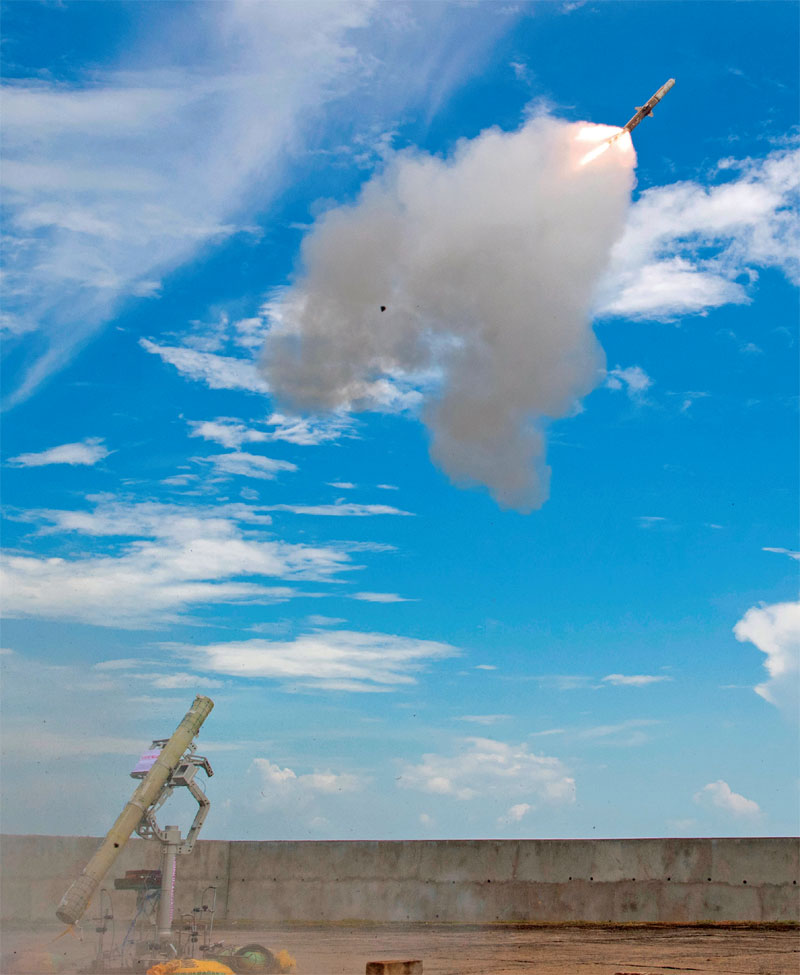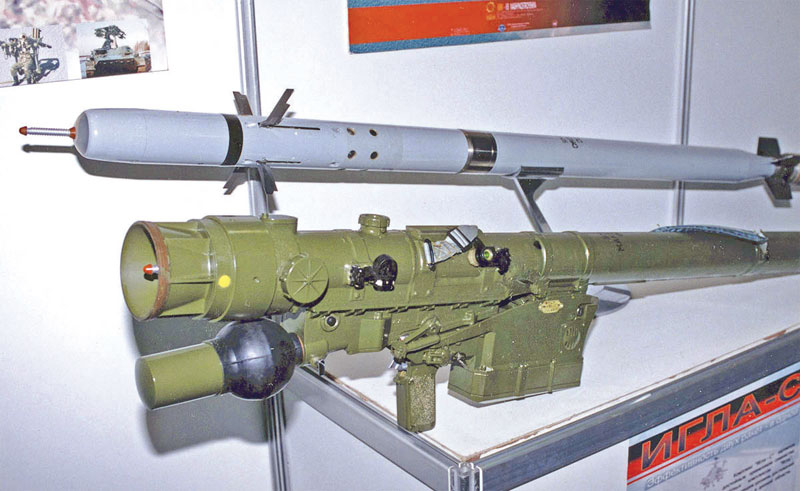Aerial threats evolving at rapid pace, they call for upgraded air defence systems
Atul Chandra
The Indian armed forces today need to cater to a wide range of operational scenarios which are not only unpredictable and increasingly challenging but cluttered with asymmetrical threats. This has made the creation of an effective air defence network even more challenging than ever before. Missile-based air defence systems must not only cater to the emergence of hypersonic weapons, but they also must meet the increasing challenge from stealthier aircraft and uncrewed platforms. The proliferation of a wide range of drones continues to pose a challenge for short range air defence systems.

Air defence networks are often hard to upgrade because of their enormous procurement cost and the vast infrastructure created to base and support these systems, in addition to training the highly specialised personnel required to operate an air defence system at peak efficiency. For the Indian armed forces, the modernisation of their air defence systems has proved particularly challenging as the cost of replacing their Soviet era systems has proved a budget buster. However, the success of indigenously developed air defence systems such as the Akash coupled with well performing homegrown radar systems have allowed the armed forces to substantially modernise their respective air defence networks.
Over the Horizon
India has invested heavily in long-range air defence and ballistic missile defence, which are both served by the potent Russian S-400 Triumpf long-range surface to air missile (SAM) system. The October 2018 contract worth 5.4 billion USD for the supply of S-400 Triumpf (SA-21 Growler) systems has brought to India one of the most sophisticated air defence systems in the world. The S-400 is a potent addition to India’s defensive posture against its northern and western adversaries. The first two S-400 missile squadrons are already operational on India’s northern and eastern borders. The third S-400 air defence system is due to be delivered shortly.
According to the ministry of defence (MoD), ‘The S-400 missile is a potent system in terms of its operational capability to provide continuous and effective air defence system to a very large area.’ One of the main advantages of the S-400 is that it is able to engage all types of aerodynamic targets and ballistic missiles up to intermediate-range ballistic missiles. The S-400 can engage aerodynamic targets such as aircraft and cruise missiles at distances as far away as 400 km and ballistic targets (flying at speeds up to 4.8 km/s) at ranges of up to 60 km at altitudes from several metres to several dozens of kms.
The highly mobile missile system travels on an all-terrain wheeled chassis and is transportable by air, land and sea. The S-400 entered service in 2007 and can destroy electronic warfare airplanes, AWACS and reconnaissance aircraft, strategic bombers and aircraft of tactical aviation, theatre ballistic missiles, tactical missiles, medium-range ballistic missiles, hypersonic targets and other aerial strike platforms. Work on the S-400 commenced in the mid-eighties and the revolutionary missile system was demonstrated for the first time in 1999.

Short Range Defence
While the army, air force and navy are modernising their surface to air based defences, they need to acquire a larger number of short-range systems and more modern man portable air defence systems, which can cater to targets ranging from slow-moving helicopters, fast jets and drones of various kinds, including those that are armed. The army is also said to have also opted for the Israel Aerospace Industries’ (IAI) ‘Sky Capture’ air defence system under a 550 million USD deal. As a command and control system for anti-aircraft systems, ‘Sky Capture’ will be used to modernise the army’s legacy air defence systems with information fusion based on multiple sensors, including advanced fire control and detection radars, electro-optical sensors all made by the IAI and ELTA systems.
Indian Army formations are particularly vulnerable to airborne threats as their air defence network largely consists of legacy systems gun systems such as the 40mm L/70 and Russian Zu-23-2 Twin gun, ZSU-23-4 Shilka, which have all been upgraded. The army also operates the Russian Tunguska-M1, which is a low-level short range mobile air defence system with gun and missile armament. The system consists of tracked chassis with a rotating tower with eight missiles and 1904 30-mm calibre shells. The army’s existing Kvadrat medium-range SAM system and the OSA-AK short-range SAM system must be considered inadequate against modern aerial threats and the older Igla shoulder fired missiles are unlikely to fare much better against modern countermeasures.
In January 2023, the Defence Acquisition Council (DAC) led by defence minister Rajnath Singh gave the Acceptance of Necessity for the procurement of an indigenously developed Very Short Range Air Defence system for the army’s VSHORADS requirement. The infra-red sensor-based MANPADS has been designed and developed indigenously by the Defence Research and Development Organisation’s (DRDO) Research Centre Imarat, Hyderabad in collaboration with other DRDO laboratories and Indian industry partners. The missile, which has been designed to neutralise low altitude aerial threats at short ranges is propelled by a dual thrust solid motor. The DRDO had completed successful tests of the VSHORADS system in September 2022. The indigenously developed VSHORADS missile features miniaturised reaction control system and integrated avionics, which have been successfully proven during tests.
According to the MoD, in view of the recent developments along the northern borders there was a need to focus on effective air defence weapon systems which were man portable and could be deployed quickly in rugged terrain and maritime domain. The army has been in search of a MANPADS system for quite some time now and had inducted small quantities of the Russian Igla-S MANPADS in 2021. An estimated two dozen launchers and nearly 200 missiles are thought to have been acquired. The Igla-S can engage targets from 500m out to 6km and defeat all types of visible fixed and rotary-winged aircraft on head-on and in pursuit courses in addition to small aerial targets like cruise missiles. The missile can be readied to fire within 17 seconds to engage and hit targets at an altitude ranging from 10m to 3,500m. The missile has a tracing, passive, infrared bi-spectral seeker.

The DRDO’s Quick Reaction Surface to Air Missile (QRSAM) system has now been in development for nearly a decade and is likely to be inducted into service in the next few years. The development of this indigenous QRSAM was approved in 2014 and the DRDO successfully completed six flight-tests in September 2022. The tests were conducted in the final deployment configuration of the QRSAM comprising indigenously developed sub-systems, including the missile with indigenous radio frequency seeker, mobile launcher, fully automated command and control system, surveillance and multi-function radars. The QRSAM weapon system can search and track targets, even while on the move and then engage the target during a short halt.
The QRSAM missile comes with terminal active homing by RF seeker guidance and is propelled by a single stage solid propellant rocket motor. Each mobile launcher can carry six canisterised missiles. A QRSAM weapon system can engage targets up to 30km and comprises a mobile launcher and battery multifunction radar (four walled Active Phased Array), battery surveillance radar, and battery command post vehicle.
Medium Range Defence
The DRDO developed Akash SAM system can be considered a successful instance of a homegrown air defence system and has received large orders for the army and the air force. The army is expected to soon order the newer Akash Prime air defence systems and two additional regiments of these missiles are expected to join the army’s four Akash regiments.
The Akash Prime is equipped with an indigenous active radio frequency seeker for improved accuracy and features several improvements that ensure more reliable performance in low temperature environments at higher altitudes. The launcher, multi-function radar and command, control & communication system for Akash Prime have also been indigenously developed. Bharat Electronics Limited and Bharat Dynamics Limited are the production agencies for all variants of the Akash SAM system.

The development of the Akash SAM system began in 1983 under the Integrated Guided Missile Development Programme (IGMDP) and user trials were finally completed in 2007. The Akash SAM system can engage targets as far away as 25 km and was first inducted into the air force in 2014. The army followed suit in 2015. The air force placed two orders for the Akash SAM for two squadrons and six squadrons respectively in 2008 and 2010. According to MoD officials, Akash SAM systems are also gaining export interest from friendly countries. The indigenous air defence system was cleared for export in December 2020 but will be different from those in service with the Indian armed forces.
A new generation SAM system being inducted into the Indian armed forces is the Medium Range Surface to Air Missile (MRSAM), which has been jointly developed by the DRDO and the IAI. The air force inducted the first deliverable MRSAM Firing Unit in September 2021 at the Air Force Station in Jaisalmer, Rajasthan. The MRSAM system can engage multiple targets at ranges up to 70 kms even in the face of severe electronic jamming. It will provide point and area air defence for ground assets against a wide range of threats including fighter aircraft, unmanned aerial vehicles, helicopters, guided and unguided munitions, sub-sonic & supersonic cruise missiles etc. A single firing unit comprises missiles, combat management systems, mobile launcher systems, advanced long-range radar, mobile power systems, radar power systems, reloader vehicle and field service vehicle. The DRDO has developed the indigenous rocket motor and control system for the missile system.

